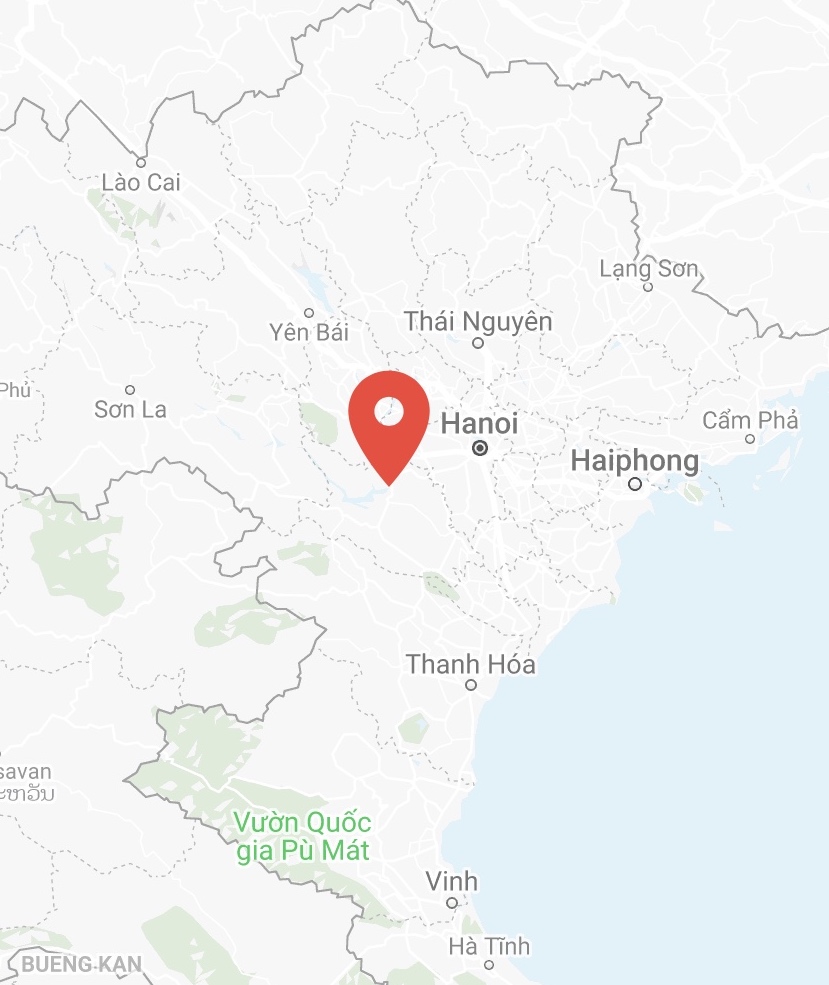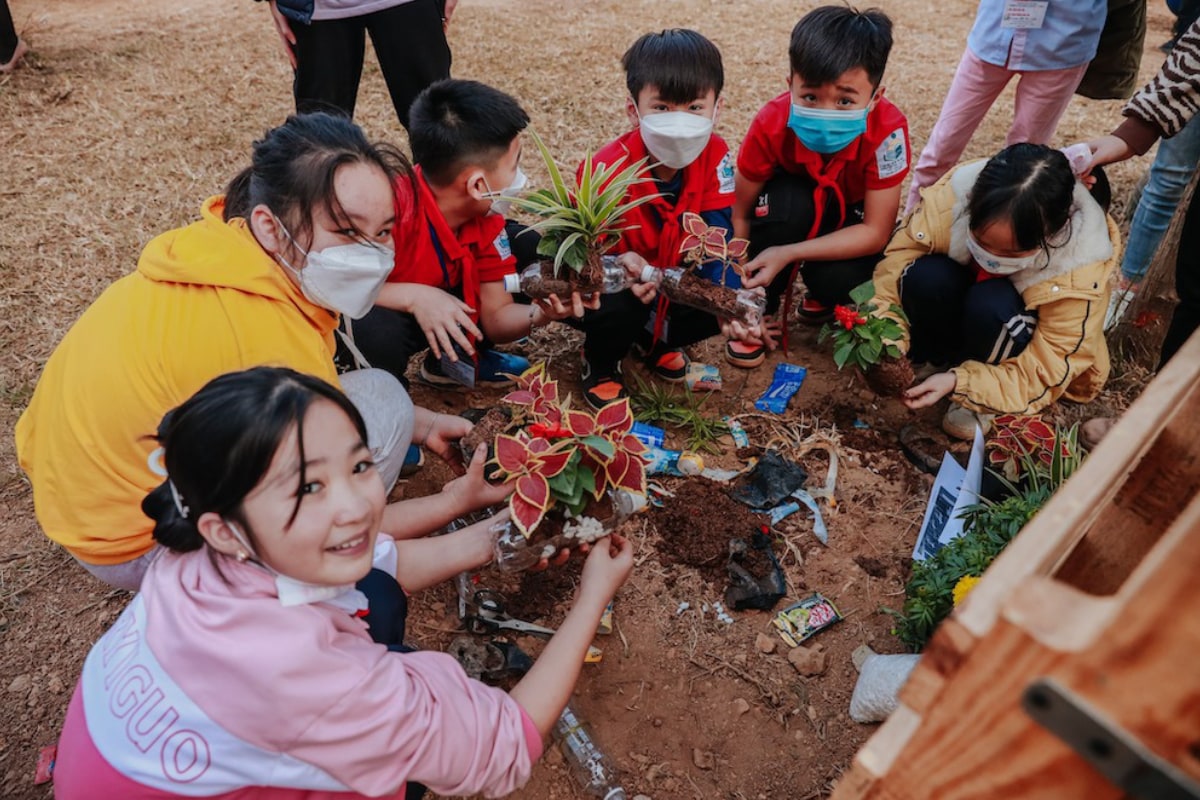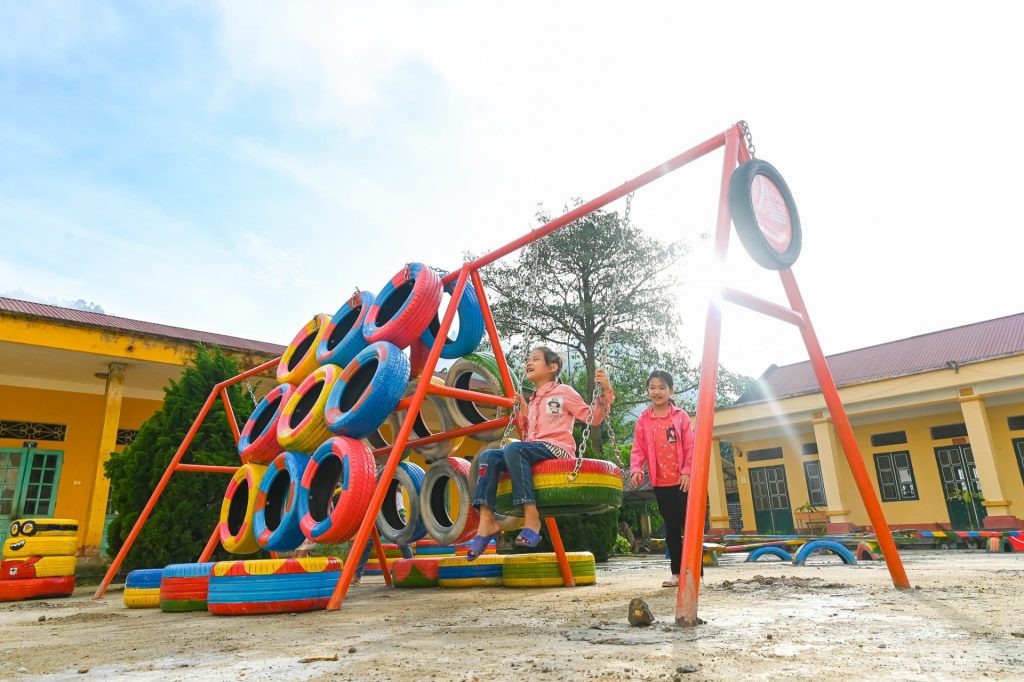aces.gchangers.org
Case Study – Vietnam:
Green Playground – An educational playground model, combining playfulness and streamlined education
Introduction
The Green Playground is an educational playground model that combines playfulness and streamlined education, which is different from normal physical playgrounds. It consists of four sections: (i) Physical space; (ii) Recycling space; (iii) Muong House and traditional games; and (iv) a Muong-and-local-herb garden.
This case study involves and mobilises resources from a wide range of stakeholders:
- ACES Vietnam Team: ACES model including Playful Learning and Frugal Education
- Anchor institution: Hanoi University of Science and Technology
- Local partners: Hoa Binh Department of Education and Training, Nguyen Tat Thanh School & Hoa Binh Education College
- Students from K1-K9, teachers
- Community Actors/Sponsors: a group of Muong teachers, a French sponsor and parents
- LBUM: an NGO design and construction group
*Hoa Binh is a mountainous province of Vietnam, located in the nation’s Northwest region. The province covers an area of 4590.57 square kilometres and as of 2019 has a population of 854,131 people. In 2020, the GDP per capita of the province was estimated to be $2,625 (equivalent to 60.5 million VND).
Target Audience
The project involved approximately 500 participants: 450 students and 55 teachers at Nguyen Tat Thanh School. In addition, it targeted a wider community of indirect beneficiaries, including 505 students and 86 teacher educators of Hoa Binh Education College, each school child’s family and young children in the neighbourhood. The Green Playground is also a model educational space for other schools/institutions in Hoa Binh Province, where all other related training and extra-curricular activities take place.

Nguyen Tat Thanh – Hoa Binh City – Vietnam
Aims & Objectives
The Green Playground can serve multiple purposes regarding students’ well-being, environment protection, playful learning and frugal education, cultural awareness and promotion, etc. These also align with the UN’s Sustainable Development Goals: SDG 3 – Good health and well-being; SDG 4 – Quality education; and SDG 5 – Gender equality.
This project aims to provide both students and teachers with a Playful and Frugal learning space as a hybrid pedagogical approach, responding to the curriculum transformation via a series of training workshops and experiential learning. Participants are involved in the co-design of activities, facilitation and evaluation of the Green Playground in teaching the Muong language, the Local Education subjects, STEM, and other subjects in the curriculum.
Examples from the toolkit of activities include:
- Designing an ideal playground (Poster) and Squid Games (frugal education: using Lego to construct the playground);
- Decorating tyres (Muong cultural patterns);
- Collecting recyclable materials;
- Discovering traditional games and Muong culture;
- Describing the playground;
- Promoting Green playground (Poster);
- Using recycled materials to create a mini Babylon flower garden;
- Playground activities and Muong lessons.
Resources
Green Playground Case Study Narrative
Timeline
The case study has been active since April 2021 and is set to complete by June 2022. It consists of 4 major phases:
- Needs analysis and preparation for the Playground;
- Co-design and co-construct both the Playground and playful/frugal activities;
- Grand opening of the Green Playground and toolkits of playful/frugal activities;
- The Green Playground as a pedagogical approach.
Lessons Learnt
- Universities as anchor institutions
- Encouraging teachers’ commitment by providing on-going facilitation and school-based development programs
- Involving all the stakeholders in all phases of the case study, from sense-making to decision-making, problem-solving and evaluating steps (using PAR)
- Considering Safety and Risk management for the construction and implementation of a physical learning space
- Considering Financial/logistics issues
Implications / Recommendations
- The Green playground and related pedagogical approach can be replicated in other sites
- Curriculum transformation should address major changes in testing and assessment
- Students’ well-being should be taken greater consideration, addressing SDGs
- Mobilisation of resources to support community resilience
Project Updates
May 2022: Site visit & final phase of data collection
For our Participatory Action Research on the Green Playground and ACES Vietnam model, we conducted the final phase of data collection, aiming to investigate the stakeholders’ evaluation of the use of the Green Playground and their suggestions for improvement. The major data sources included (i) interviews with Heads of Nguyen Tat Thanh School and Hoa Binh College of Education (n=2); (ii) surveys with primary and secondary school teachers (n=40); and (iii) surveys with Y8-9 students (n=80). It was a pity that many of the students were doing a mock test to prepare for their school leaving examination, so our response rates dropped compared to the other 3 previous phases.
Regarding the junior secondary students, Y6 (n=26), we organised a Playful activity which allowed them to reflect on their use of the Green Playground. They worked in 5 groups, created a poster and delivered a presentation on how they enjoyed playing on the playground, what they liked playing most, what they think they should do to maintain their playground and what they expected more from the playground.
Then the students were instructed to co-design a STEM product on the playground. They worked together in the same group, seeking frugal materials needed to make a water sanitisation container, a desalination device and a droplet/fog collector. This activity took place in about 30 minutes, after which the students came back to their classroom for a focus group interview (n=6, random sampling). The students showed a positive attitude towards the Green Playground, and they would like to maintain the playground at its best condition. However, they also wished to experience more learning activities on the playground when they were free from their exams and exam preparation.
One major part of our site visit was working with our ACES Ambassadors (n=9) who have collaborated with ACES Vietnam since the beginning of the project through participating in a series of training workshops. The objectives of our meeting were to reinforce the principles of frugal aspects through play and investigate teachers’ perceptions and practices of frugal education. First, we re-introduced Design Thinking and gave specific examples of how Design Thinking could be employed in creating an educational activity/design (e.g. making a water sanitisation container, a desalination device or a droplet/fog collector).
Following this, the teachers were divided into three groups, working towards a solution related to the theme of Clean Water and Sanitation (SDG 6). They had to figure out the context (e.g. related problems), empathy (e.g. learner characteristics) and a possible design (e.g. materials needed and procedure), then conduct a prototype, test and final pitch.
During the activity, the ACES team members served as students and mentors, making critical questions to challenge each group. By iteratively and repetitively reflecting on their objectives, the learning outcomes and the Design Thinking steps, the teachers had opportunities to improve the design for a better final product. After final pitching the design, the teachers worked together again and wrapped up some important lessons about the feasibility of the design in their teaching and suggestions for improvement.











